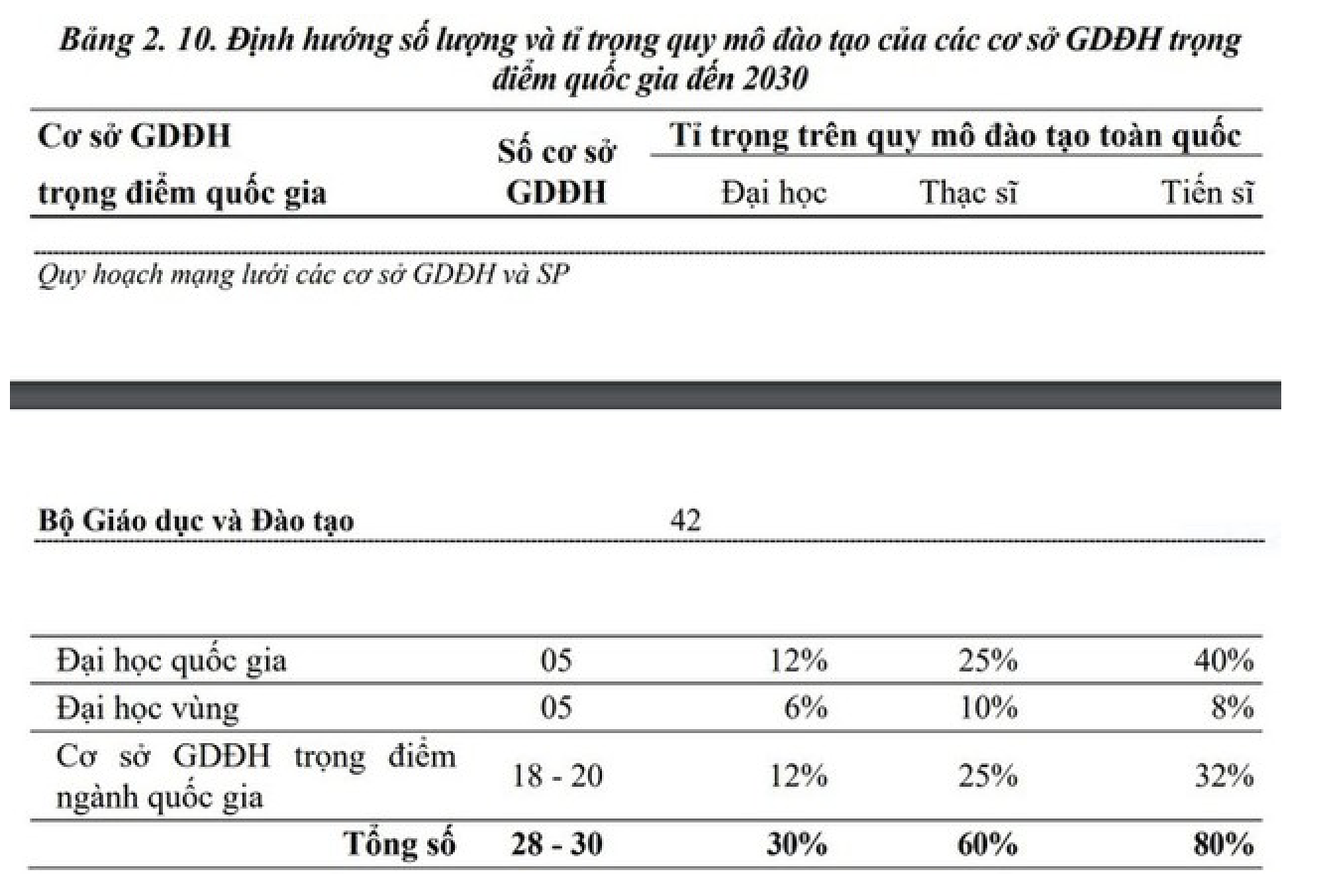VTV - By 2030, there will be approximately 30 national key higher education institutions nationwide.
VTV - By 2030, there will be approximately 30 national key higher education institutions nationwide.
According to the Draft Plan for the Network of Higher Education and Pedagogy for the Period 2021-2030, with a vision to 2050 by the Ministry of Education and Training (MoET), the arrangement and development of the Higher Education (HE) network is aimed at maintaining stability in terms of quantity and structure, focusing on enhancing capacity, improving quality, and expanding the scale of HE institutions.
By 2030, there will be about 250 HE institutions and 50 branches under 200 leading HE institutions, distributed according to regions, including approximately 30 national key HE institutions, comprising 5 national universities, 5 regional universities, and 18 to 20 national key HE institutions by field.
There will be around 100 other leading HE institutions under ministries, branches, central agencies, and local authorities, and at least 70 private HE institutions, including non-profit private HE institutions and foreign-invested HE institutions.
According to MoET, the development of the national key HE institution network is based on potential and reputation, associated with roles and missions in the HE system.
By 2030, the national key HE institutions will include: 5 National Universities; 5 Regional Universities; and 18-20 national key HE institutions by field. These are the leading units with the scale of undergraduate training nationwide accounting for 30%; Master's degree 60%; and Doctorate 80%.
By 2030, there will be about 30 national key higher education institutions nationwide, including 5 national universities, 5 regional universities, and 18 to 20 national key higher education institutions by field.
MoET's viewpoint is that national universities are at the center of dynamic economic regions, with the mission of leadership and a core role in implementing national strategic tasks for developing high-quality human resources, science, technology, and innovation; they have the capacity, reputation, and quality leading the country in science, technology, and other key areas of national importance.
By 2030, the development of 3 more national universities based on Hue University, Danang University, and Hanoi University of Science and Technology, together with Hanoi National University and Ho Chi Minh City National University, will become leading universities in Asia, with at least 20 fields ranked in the top 1,000 internationally prestigious rankings.

National universities maintain a stable scale of undergraduate training, focusing on improving quality and increasing the proportion of postgraduate training linked to research and innovation, especially in key areas and fields. After 2030, it is possible to develop additional national universities from regional universities and national key HE institutions with strong potential and high reputation in the system.
Regional universities are located at the center of regions and sub-regions, with the mission of leadership and a core role in training high-quality human resources, scientific research, development, and application of technology for the region; they have the capacity, reputation, and quality leading the region in key areas and industries.

By 2030, the development of 4 more regional universities based on Vinh University, Nha Trang University, Tay Nguyen University, and Can Tho University, together with Thai Nguyen University, will become prestigious universities in the region and the world.
Regional universities focus on improving quality, gradually expanding the scale of training, increasing the proportion of postgraduate training linked to promoting scientific research, especially in key areas and industries of the region.
Via VTV